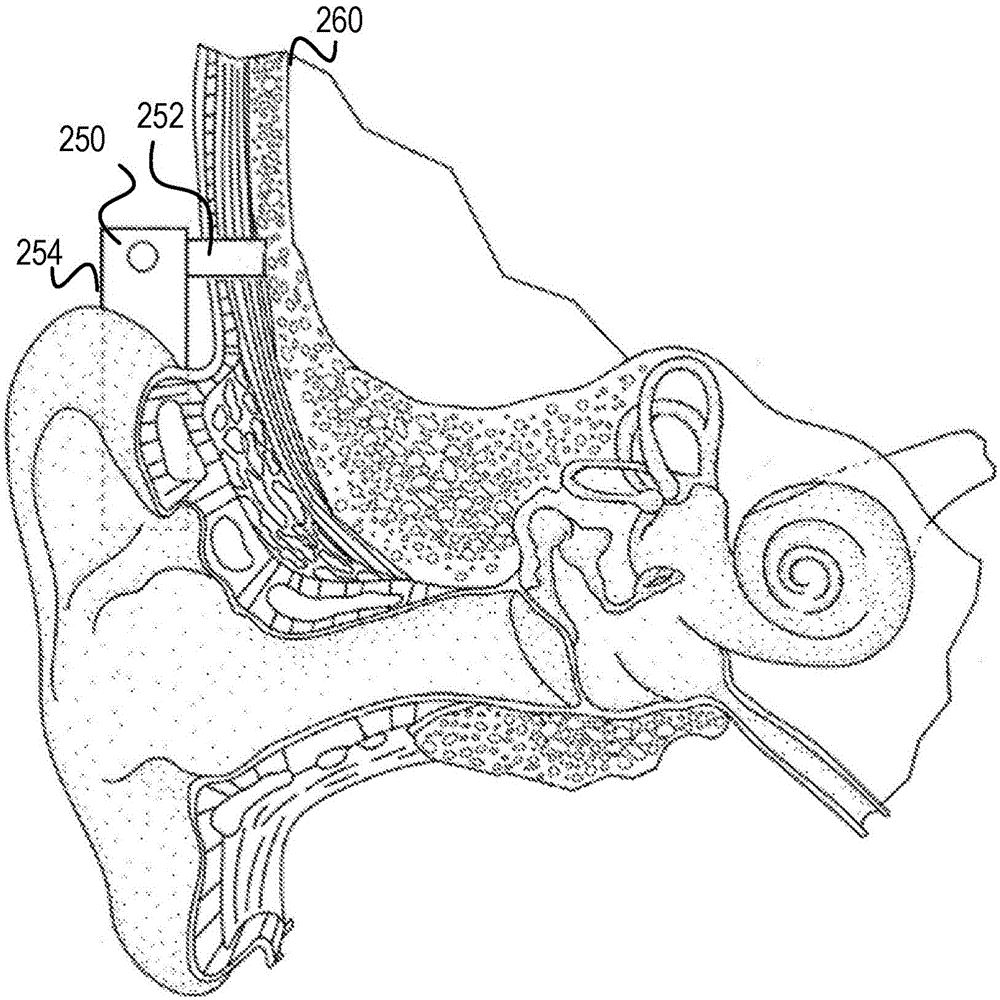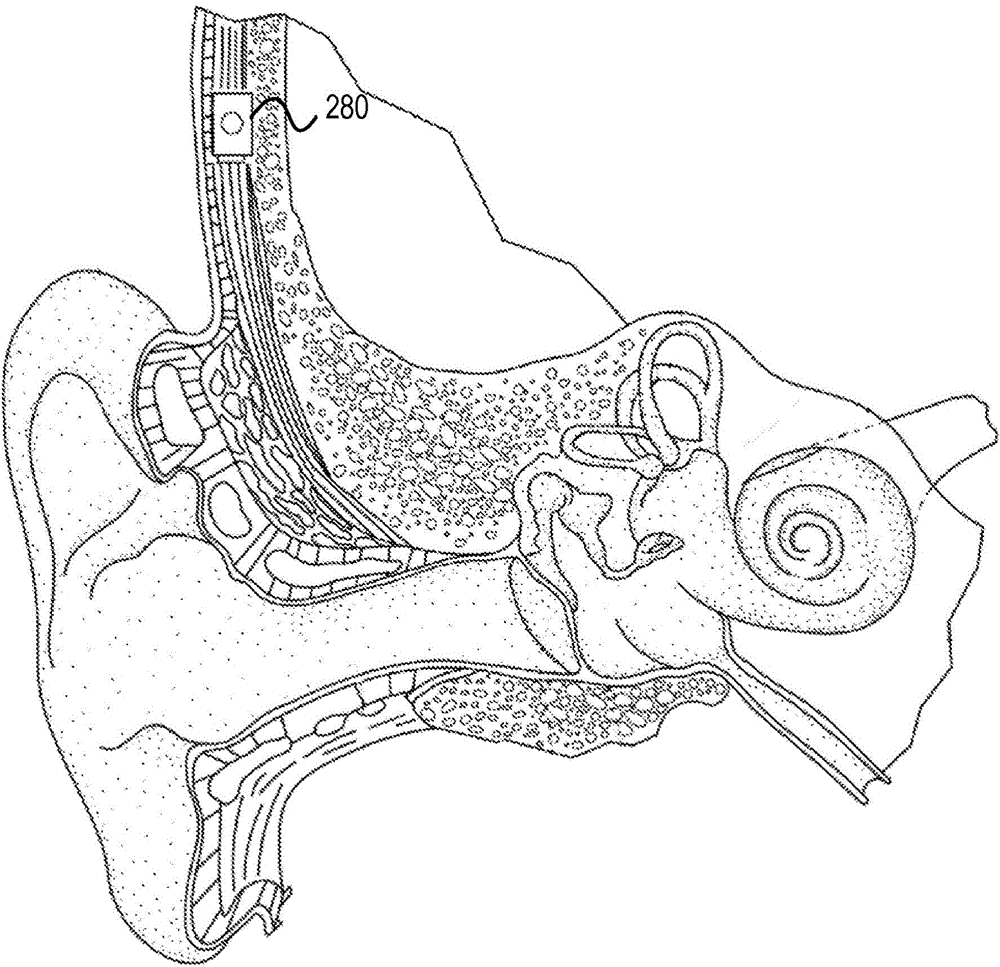Fitting a bilateral hearing prosthesis system
A hearing prosthesis and prosthesis technology, applied in the direction of prosthesis, bone conduction transducer hearing equipment, hearing aids for hearing loss, etc., can solve problems such as bad acoustic feedback
- Summary
- Abstract
- Description
- Claims
- Application Information
AI Technical Summary
Problems solved by technology
Method used
Image
Examples
Embodiment Construction
[0024] For purposes of illustration, this disclosure generally refers to vibration-based hearing prostheses. However, the embodiments and examples disclosed herein are equally applicable to other types of hearing prostheses now known or later developed. Furthermore, some disclosed aspects can be applied to other acoustic devices or sound processors not necessarily associated with a hearing prosthesis.
[0025] figure 1 is a block diagram illustrating a hearing prosthesis 101 . Hearing prosthesis 101 may be a bone-anchored hearing prosthesis or other vibration-based hearing prosthesis, an acoustic hearing aid, a cochlear implant, a direct acoustic stimulation device, an auditory brainstem implant, or any other type configured to receive and a hearing prosthesis processing at least one signal from an audio transducer of the prosthesis. Much of the discussion herein concerns vibration-based hearing prosthesis systems, including bilateral hearing prosthesis systems with both c...
PUM
 Login to View More
Login to View More Abstract
Description
Claims
Application Information
 Login to View More
Login to View More - R&D
- Intellectual Property
- Life Sciences
- Materials
- Tech Scout
- Unparalleled Data Quality
- Higher Quality Content
- 60% Fewer Hallucinations
Browse by: Latest US Patents, China's latest patents, Technical Efficacy Thesaurus, Application Domain, Technology Topic, Popular Technical Reports.
© 2025 PatSnap. All rights reserved.Legal|Privacy policy|Modern Slavery Act Transparency Statement|Sitemap|About US| Contact US: help@patsnap.com



